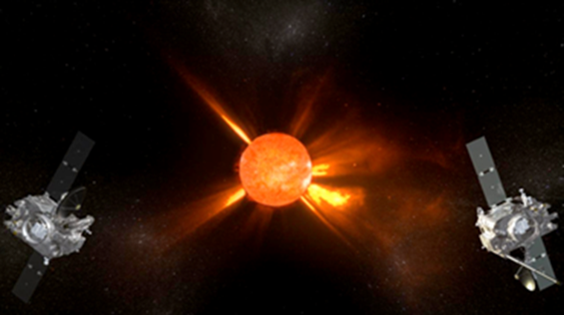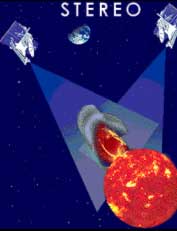In October 2006, NASA will launch the STEREO mission that features important Belgian contributions. This mission will provide the first ever three-dimensional view of the heliosphere and of the solar corona. The SIDC developed special software to make full use of the incoming data.

STEREO (Solar-TErrestrial RElations Observatory) consists of two nearly identical spacecraft launched to orbit around the Sun. Each spacecraft carries an observatory of 16 scientific instruments that will give us a view in 3 dimensions of the solar corona and inner part of the solar system.

This mission is launched with intent to solve several outstanding problems of modern solar physics. An important issue is the physics of Coronal Mass Ejections (CMEs). STEREO will allow scientists to see Earth-directed CMEs with a very good imaging quality, and even measure their true speed in 3D. It is important to have a better knowledge of these phenomena as the CMEs that are directed towards the Earth may cause geomagnetic storms via the interaction of the magnetic fields of the Earth and the CME itself. A geomagnetic storm may produce such negative space weather effects as satellite anomalies, power grid disruptions, perturbations of radio communications and the Global Positioning System (GPS), pipeline corrosion.
The Belgian contribution to STEREO mission is twofold. The SIDC, who participated in the scientific preparation of STEREO, is currently preparing the future STEREO data exploitation. The space weather information that will be provided by STEREO will be used in real-time for daily space weather forecasting what is currently performed at the SIDC. The Centre spatial de Liège (CSL) was responsible for the optical tests of the Heliospheric Imagers.





